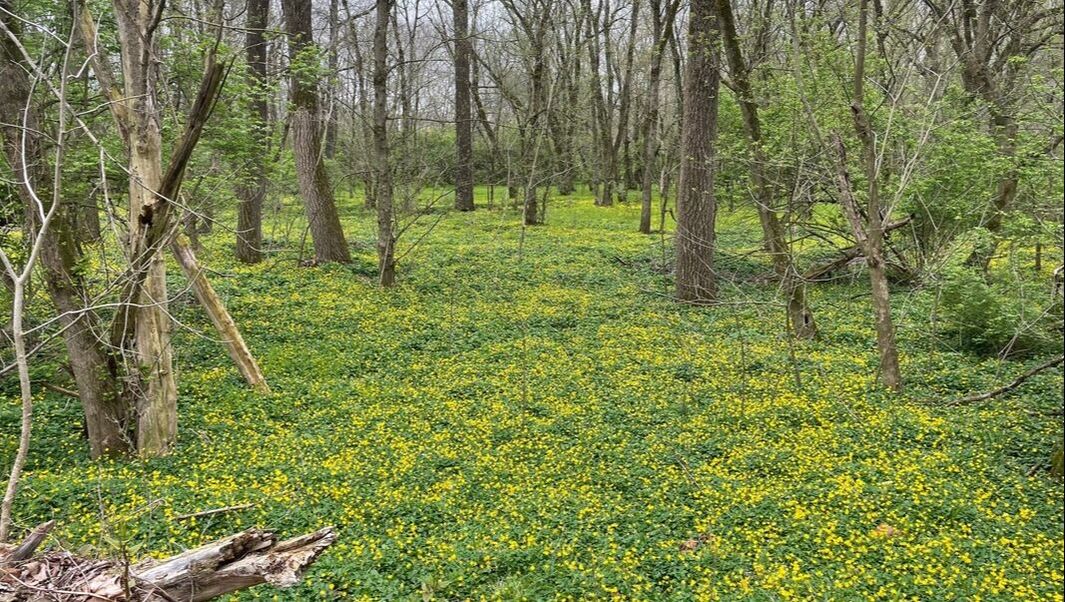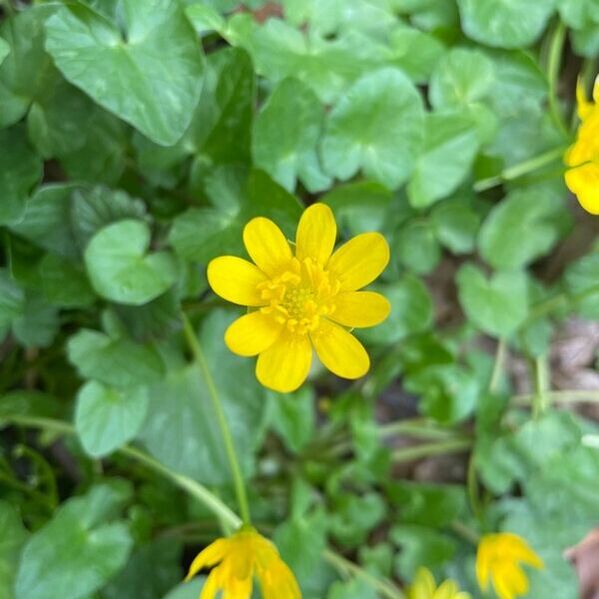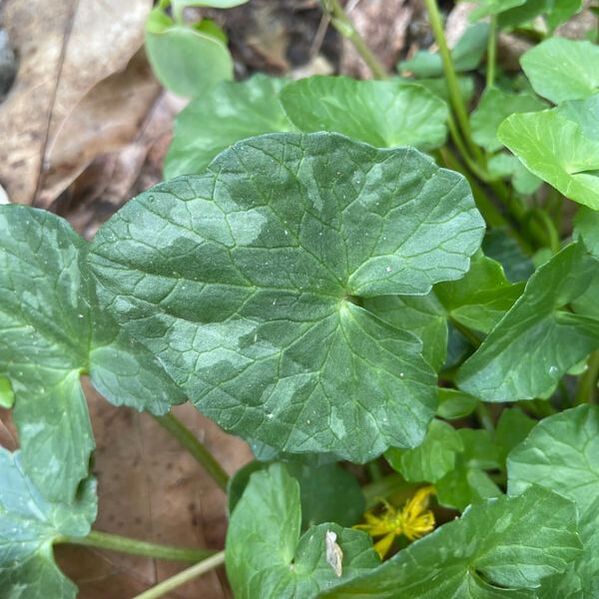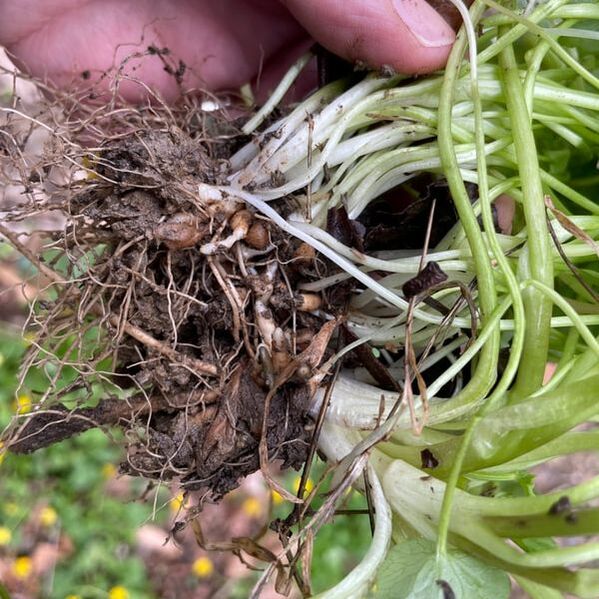|
These days it seems like we hear of a new invasive species daily. Whether it is a plant or animal, invasive species can wreak havoc on our local environment and economy. Lesser celandine (Ficaria verna) is an invasive plant that doesn’t look harmful, but in fact outcompetes our native spring wildflowers and creates a monoculture affecting insects, animals, and thus the ecosystem. It is found commonly throughout Southwest Ohio including Warren County. Lesser celandine, a Spring ephemeral, was first noted in Pennsylvania in the late 1860’s. It was introduced as an ornamental and eventually started popping up in native areas. A member of the buttercup family, lesser celandine is a perennial flowering herbaceous plant. The leaves are a shiny, dark green kidney shape with wavy edges. The attractive flowers are bright yellow with 7 to 12 petals. Lesser celandine is low growing, often forming dense ground coverage once established. The plant’s shoots typically emerge as early as January with flowers beginning to bloom in March and April. By June, the vegetation has died back and the plant becomes dormant. The reproduction system of lesser celandine makes this plant a difficult one to control. It primarily reproduces through bulblets and underground tubers. The tiny bulblets are attached to the leafstalks. Underlying each plant is a mass of finger-shaped tubers that are produced by the roots. Disturbances by animals and environmental factors are what spreads the bulblets and tubers. Since lesser celandine is often found along streams and river ways, flood events play a major role in its spread. Replanting the area with native alternatives is a great way to help control soil disturbance while replenishing an important nectar source for insects. Lesser celandine is often confused with a desirable native wetland plant called marsh marigold (Caltha palustris). While they have similar leaf shapes and color, marsh marigold flowers only have five to nine petals and it does not produce tubers or bulblets. Control and management of lesser celandine is very difficult and should be targeted over several years. For small infestations, lesser celandine may be pulled up by hand or dug up using a hand trowel or shovel. It is very important to remove all bulblets and tubers. If mechanical removal is to continue after dieback of the plants, individual plants or clumps will need to be marked with some sort of stakes or flagging because it will be impossible to relocate the plants otherwise. Mechanical control is very difficult for large infestations in high-quality natural areas. If choosing to control chemically (glyphosate, 2,4-D, MCPP, MCPA, dicamba, or triclopyr), you must follow label requirements. Higher control (90%-95%) has been found if spraying is done twice during the early and mid-flowering (up to 50% flower) stages over two years. Check out native plant retailers for possible alternatives. Some suggested alternatives include wild ginger (Asarum canadense), bloodroot (Sanguinaria canadensis), twinleaf (Jeffersonia diphylla), cutleaf toothwort (Cardamine concatenate), dutchman’s breeches (Dicentra cucullaria), virginia bluebells (Mertensia virginica) and golden ragwort (Packera aurea). While the lifecycle of lesser celandine may be short, its early emergence and ability to grow and spread in a variety of habitats make it an aggressive invasive species to look out for. Keep yourself familiar with these threats to help prevent further spread by visiting the Ohio Invasive Plants Council. For more information regarding growing native plants, Warren County Soil and Water Conservation District programs, and/or technical assistance on water or soil questions, call our offices at 513-695-1337. Additional Resources: Buckeye Yard and Garden Line, Lesser Celandine: Greater Problem by Joe Boggs PennState Extension: Don’t Be Deceived by This Beguiling Springtime Plant Brandywine Conservancy
0 Comments
|
Details
Warren County SWCD Staff BlogA blog to keep you informed on all the latest news at Warren County SWCD and in the conservation world. Archives
May 2024
Categories
All
|
|
|
Contact:PHONE: (513) 695 - 1337
EMAIL: [email protected] HOURS: Monday - Friday 7:30am - 4:00pm (except holidays) Connect:Warren County Soil & Water Conservation District Copyright © 2016
Warren SWCD Privacy Notice. Emails are serviced by Constant Contact. Constant Contact's Privacy Notice. |
